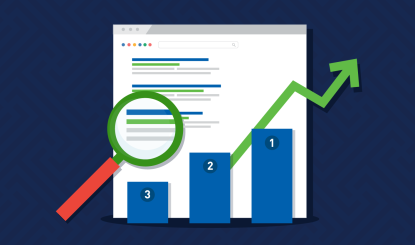Learning To Love Technical SEO
I would like to discuss how we stopped worrying and learned to love technical SEO. Everybody pays the dumb tax, at least once. The first car you lease, the first relationship when you just know that you can fix them, the first time you migrate your e-commerce business from one platform to another one. At Weidenhammer, we’re no different, except that we build a lot of e-commerce websites, so we learned to avoid paying that tax by preventing many of the common mistakes that cost you money.
Our process is this: we start with SEO first. Before a designer sits down to review styles, artistic direction, or layout, we sit down with you and your SEO data for a frank conversation. What pages are working well for you? What audiences and channels convert? What brand terms drive traffic to your site, and how should those be reflected in your navigation? We spend time at the very beginning of your project asking these questions, and talking with your team about the answers.
First, Do No Harm –
the Hippocratic Oath, more or less
Our immediate goal is to prevent lasting harm to your organic SEO through our actions as your developers and designers. We want to prevent accidentally destructive decisions such as:
- Collapsing a high converting subcategory landing page into a more generic category landing page
- Large scale changes to copy & content that could impact rankings
- Over-attention to low-performing brand or category pages or burying high-performing brand or category pages
In order to perform this analysis, we will ask that you add our agency account as read-only to your Google Analytics and Google Search Console (formerly Webmaster Tools) accounts. We’re also happy to look at Bing Webmaster Tools or other data sources if it represents a significant enough source of traffic to be relevant to our conclusions.
Our team is not evaluating the performance of paid search, email, affiliate, or social channels! We can certainly do a high speed fly-by over that territory on our way into your organic data, and will certainly share anything we see that looks alarming. If you’re interested in a more focused audit that includes a strategic evaluation of other channels, we would be thrilled to include an audit in our deliverables to you.
Our design team will be part of the conversation as we do our analysis and present our findings, and you supply the context and background (and decisions!) needed to drive the project forward. Once everyone has agreed on things like site taxonomy, content strategy, and menu/navigation – we can begin the design process and the SEO team will temporarily exit your project until needed later.
“No Plan Survives First Contact with the Enemy” –
Helmuth Von Moltke
In this case, the enemy is a crawler and the plan is your site. The crawler will find the missing tags, the absent alt-text, the 404’ing links and redirect loops. That’s why we point our own crawler at your site before it launches. Call it a training exercise with paintball guns – we want to see what goes splat before it’s a real site being crawled by Google.
This crawl can only be done once your catalog has been fully populated and all pages are content complete, so it tends to occur towards the very end of the project – after a soft launch of the site but before DNS has shifted over your domain to this new server. We’ll review the results with you, and help prioritize the findings. It’s usually the case that there are issues of some sort that you’ll want to know about and fix prior to launch.
Our preference is to let our clients patch holes in their data (meta keywords, descriptions, punch up content, supply alt text for images) while we own any technical issues like HTTP error codes.
Finally, we’ll work with you to implement a 301 redirect plan. Depending on what’s changed, we may only need to do redirects for a handful of pages, but if many changes are being made the plan may be more extensive. Keep in mind that 301 redirects are only a tool, they are not a silver bullet; Google will not transfer authority for pages that have had substantial content changes, even if there is a redirect in place. Google will redirect users to the new URL, but it won’t recognize that the new URL is equivalent to the old URL, and so you’ll lose any banked SEO value.
“What just happened?” –
Alice
So now you’ve launched your new site. What to expect? You’ll almost certainly see a temporary drop in ranking as Google re-crawls your site. You should have uploaded an updated sitemap.xml file to Google Search Console that has your new URL structure. That will help search engine crawlers re-index the site and ensure the dip in ranking is temporary. Typically we suggest increasing paid ads for a month after launch to offset the organic drops from the re-platform. Usually within 3-6 weeks, your rankings have recovered.
Regular monitoring of your site performance is critical. Understanding how your channels are performing will help you decide where to spend advertising dollars, and where your brand is finding success, or obstacles. At Weidenhammer, we want to be part of that conversation with you after the launch, not just during the build.
Careful attention to organic SEO is important during a disruptive project like a re-platform or a migration. We’re confident in our ability to mitigate the risk together with our customers.
Contact us for more information.
